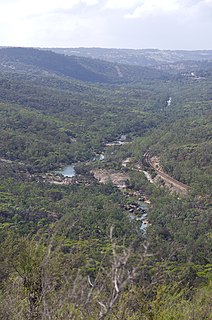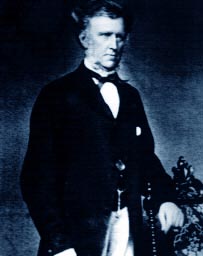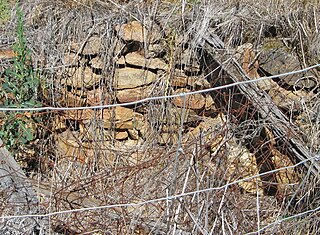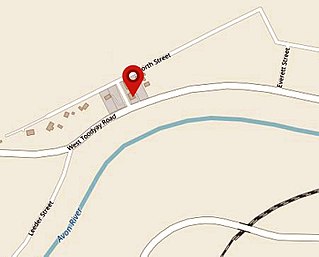Coordinates: 31°31′46″S116°25′09″E / 31.5294°S 116.4193°E

A geographic coordinate system is a coordinate system that enables every location on Earth to be specified by a set of numbers, letters or symbols. The coordinates are often chosen such that one of the numbers represents a vertical position and two or three of the numbers represent a horizontal position; alternatively, a geographic position may be expressed in a combined three-dimensional Cartesian vector. A common choice of coordinates is latitude, longitude and elevation. To specify a location on a plane requires a map projection.


The ford crossing is a natural feature of the Avon River in West Toodyay, Western Australia. It was used by the early settlers in the area to cross the river before the construction of the West Toodyay Bridge.

The Avon River is a river in Western Australia. A tributary of the Swan River, the Avon flows 240 kilometres (150 mi) from source to mouth, with a catchment area of 125,000 square kilometres (48,000 sq mi).

West Toodyay was the original location of the town of Toodyay, Western Australia. It is situated in the Toodyay valley, 85 kilometres (53 mi) north east of Perth. The Toodyay valley, discovered by Ensign Robert Dale in 1831, was opened up for settlement in 1836. The original site for the town of Toodyay was determined in 1836 and its boundaries were finalized 1838. The first survey of the town was carried out in 1849. After several serious floods, the decision was made to move the town of Toodyay to higher ground. In 1860, the new town of Newcastle was established 3 miles (4.8 km) further upstream. Newcastle was renamed in 1910 to Toodyay, and the original site became known as West Toodyay.

The West Toodyay Bridge crosses the Avon River in West Toodyay, Western Australia.
For many years the whereabouts of the ford remained a mystery. It is not marked on any early survey map. In addition, the building of the West Toodyay Bridge in 1902 negated its use and details of its existence were lost. However, research carried out and published in 2010 revealed that the ford crossing was, and still is, a natural feature of the Avon River. A wide rocky shelf spans the river immediately upstream from the West Toodyay Bridge. It would have facilitated an easy crossing. In addition, the approaches on either side are relatively protected from erosion during times of flood. [1]

A ford is a shallow place with good footing where a river or stream may be crossed by wading, or inside a vehicle getting its wheels wet. A ford may occur naturally or be constructed. Fords may be impassable during high water. A low water crossing is a low bridge that allows crossing over a river or stream when water is low but may be covered by deep water when the river is high.
It is highly probable that the rocky ford crossing was part of a long established trail used by the local indigenous Ballardong Noongar people [2] as they travelled up and down the Toodyay valley. [1]

Ballardong are an indigenous Noongar people of the south western area of Western Australia.

The Noongar are a constellation of peoples of Indigenous Australian descent who live in the south-west corner of Western Australia, from Geraldton on the west coast to Esperance on the south coast. Noongar country is now understood as referring to the land occupied by 14 different groups: Amangu, Ballardong, Yued, Kaneang, Koreng, Mineng, Njakinjaki, Njunga, Pibelmen, Pindjarup, Wardandi, Whadjuk, Wiilman and Wudjari.
Toodyay valley is an older term for the section of the Avon River valley in Western Australia, where the town of Toodyay, and its original site are located.
The ford proved ideal for the passage of horse, cart and wagon across the Avon River. If, however, the river was in flood, any crossing of the river would have been too dangerous to attempt. Nevertheless, unlike other purposely built fords, there appear to have been no reports of damage to the ford, even in times of severe flooding, nor of any repairs having been carried out to its approaches.
On the upstream side of the ford lay a long pool. The pool was fed by a permanently running spring that entered the river bed from the north side of the Avon River. Thus, throughout the heat of summer, the pool was ever present. The Military Barracks also stood upstream from the ford crossing on the left hand bank of the river. [1] The ford crossing proved to be of paramount importance to the early inhabitants of the town of Toodyay as well as those in the valley beyond.













